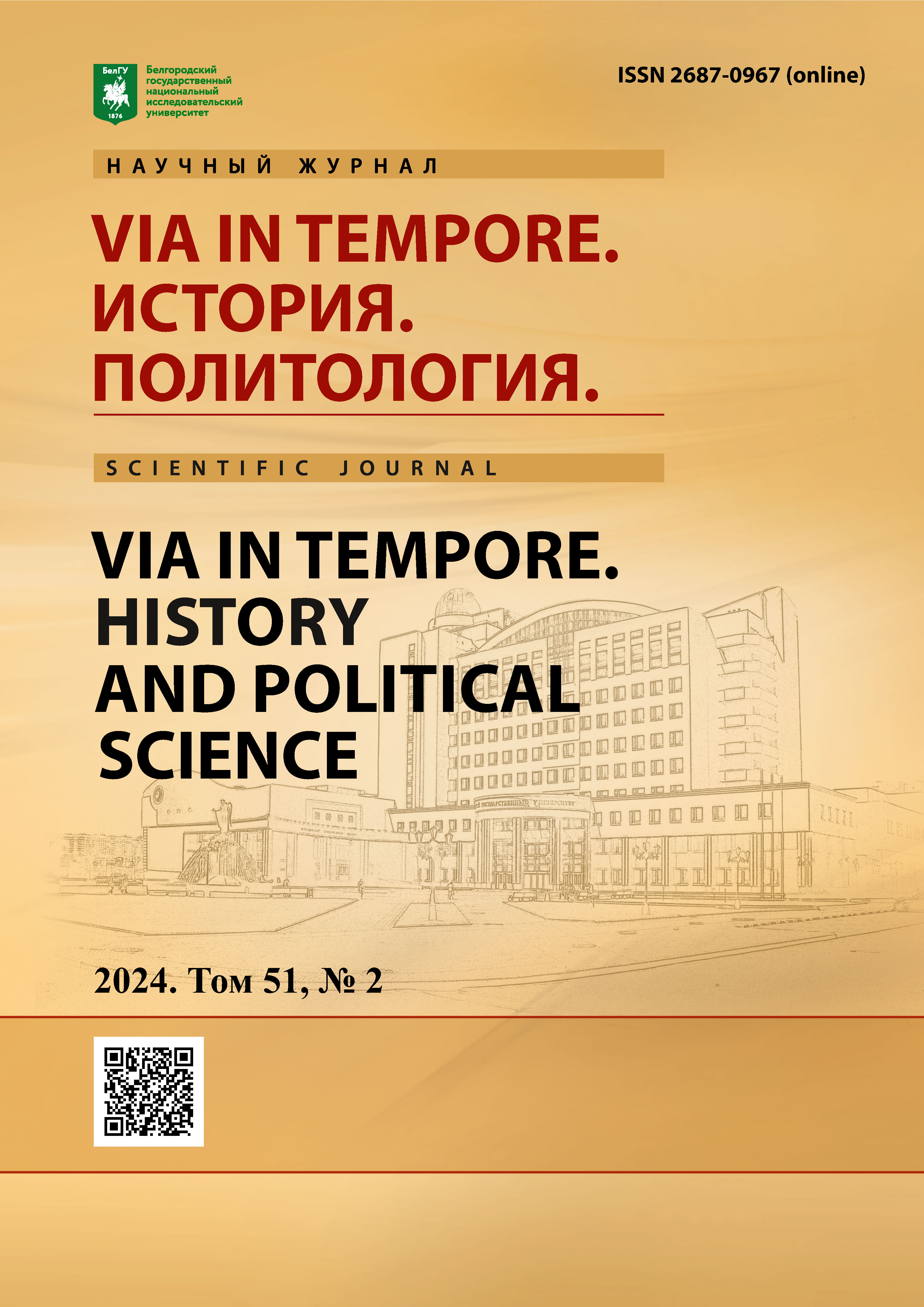Representation of the Women’s Power in the Era of Theodosius II According to Late Antique Sources
DOI:
https://doi.org/10.52575/2687-0967-2024-51-2-337-343Keywords:
Early Byzantium, Theodosius II, Elia Pulcheria, Athenais-Evdokia, power, charityAbstract
The reign of Theodosius II was one of the longest in the history of Early Byzantium, despite the fact that he became emperor at the age of seven. Therefore, it was necessary for the state to think of a type of propaganda that would help keep power in the hands of this dynasty. The article discusses some types of images of the royal family and ways to broadcast them to the people. The first was the image of the imperial house as a powerful, indestructible monolith; the second was the royal couple as the successors of the Holy Church. Konstantin and Elena. The work also shows how the concept of representation of imperial power and the role of women in this changed during the reign of Theodosius the Younger. It seems that, in general, the regime of Theodosius II continuously developed a consistent course of public representation of power and adapted it to the changes taking place at the imperial court – from the accession of the child emperor to the alleged exile of Eudocia and Pulcheria. Perhaps partly because of these successful propaganda images, the reign of Theodosius the Younger was so long.
Funding
The work was carried out without external sources of funding.
Downloads
References
Александрова Т.Л. 2017. Императрица Афинаида-Евдокия: путь к трону. Проблемы истории, филологии, культуры 1: 75–87.
Александрова Т.Л. 2018. Византийская императрица Афинаида-Евдокия: жизнь и творчество в контексте эпохи правления императора Феодосия II (401–450). Санкт-Петербург, Алетейя. 416 с.
Александрова Т.Л. 2016а. Дитя, вознесенное в воздух (к вопросу о существовании сына Феодосия II и Евдокии, Аркадия II). Cursor mundi. Вып. 8: 67–85.
Александрова Т.Л. 2016б. Феодосий II и Пульхерия в изображении Созомена (к проблеме датировки «Церковной истории»). Вестник Древней истории 2: 371–387.
Барышева Е.В. 2011. Репрезентация власти как форма политического конструирования социальной среды. Вестник РГГУ. Серия: Политология. История. Международные отношения 1 (62): 123–131.
Болгов Н.Н., Сбитнева Ю.Н. 2011. Соматические рефлексии и репрезентации ранневизантийской женщины. Античная древность и средние века. Вып. 40: К 50-летию Уральской школы византиноведения. Екатеринбург, Изд-во Урал. Ун-та: 31–39.
Гиббон Э. 2008. История упадка и разрушения Великой Римской империи: закат и падение Римской империи. Т. 3. Москва, ТЕРРА. 404 с.
Иваницкая Я.Ю., Болгов Н.Н. 2010. Репрезентация имперской идеологии в позднеантичных памятниках Константинополя: императорские колонны IV–V вв. Via in tempore. История. Политология 19 (90): 39–52.
Степаненко В.П. 2000. Военный аспект культа Богоматери в Византии (IX–XII вв.). Античная древность и средние века 31. Екатеринбург, Урал. гос. Ун-т: 198–221.
Успенский Б.А., Успенский Ф.Б. 2017. Иноческие имена на Руси. Москва, Институт славяноведения РАН. 340 с.
Chew K. 2006. Virgins and Eunuchs: Pulcheria, Politics and the Death of Emperor Theodosius II. Historia: Zeitschrift für Alte Geschichte 2: 207–227.
Holum K.G. 1977. Pulcheria᾽s Crusade A.D. 421–422 and the Ideology of Imperial Victory. Greek-Roman and Byzantine Studies 18: 153–172.
Holum K.G. 1982. Theodosian Empresses: Women and Imperial Dominion in Late Antiquity. Berkeley – Los Angeles.
McClanan A. 2016. Representations of Early Byzantine Empresses: Image and Empire. Springer.
McCormick M. 2001. Emperor and Court. In A. Cameron, B. Ward-Perkins and M. Whitby, eds. The Cambridge Ancient History: Volume Fourteen, Late Antiquity: Empire and Successors, A.D. 425–600, Cambridge and New York: Cambridge University Press: 135–163.
McEvoy M.A. 2013. Child Emperor Rule in the Late Roman West, A.D. 367–455. Oxford: Oxford University Press.
Millar F.A. 2006. Greek Roman Empire: Power and Belief under Theodosius II (408–450). Univ. of California Press.
Mitchell S. 2007. A History of the Later Roman Empire. A.D. 284–641. Blackwell Publishing.
Theodosius II: Rethinking the Roman Empire in Late Antiquity. Kelly C. ed. Cambridge and New York: Cambridge University Press.
Van Nuffelen P. 2012. Playing in the Ritual Game in Constantinople (379–457). In L. Grig, and G. Kelly, eds. Two Romes: Rome and Constantinople in Late Antiquity. Oxford and New York: Oxford University Press: 183–200.
Abstract views: 143
Share
Published
How to Cite
Issue
Section
Copyright (c) 2024 Via in tempore. History and political science

This work is licensed under a Creative Commons Attribution 4.0 International License.


